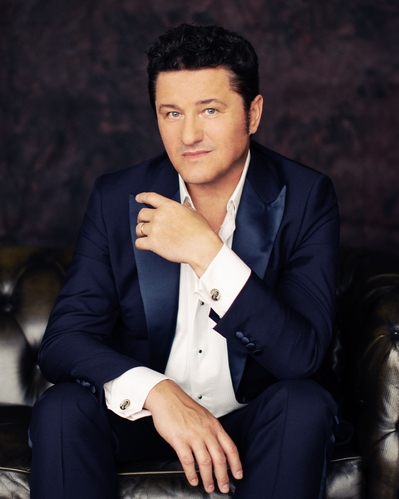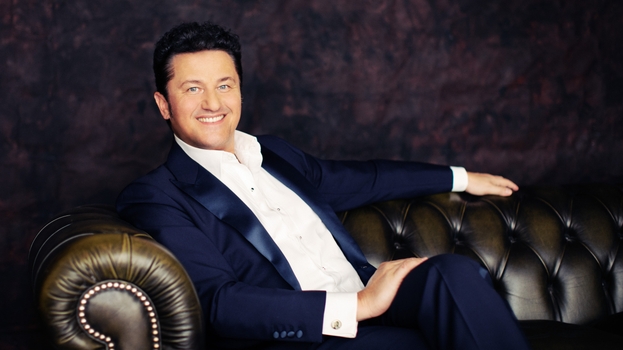"Manrico is more minstrel than soldier"
Interview |
How many roles has KS Piotr Beczała alone already thrilled Viennese audiences with!
The broad spectrum includes Donizetti's Edgardo, Mozart (Belmonte and Tamino),
French (Werther, Roméo, Faust, Don José), Puccini (Rodolfo, Cavaradossi),
Dvořák (Rusalka Prince), Wagner (Lohengrin), more unusual roles such as Cilèas Maurizio and of course Verdi roles such as the Duke in Rigoletto,
Alfredo, Gustaf III.
What could the audience be missing?
Manrico in Trovatore, for example - and this is exactly the role he will be singing for the first time in Vienna in May.
A fitting interview with the celebrated tenor.
You recently sang Cavaradossi at the State Opera, now it's time for Manrico. Both are in love, both are involved in politics and both die at the end.
But how do they differ in character?
The stories of verismo are simpler, you understand the plot at first sight, no text is obscured by repetition, every word has its own unmistakable meaning - and most of the characters are exactly the same.
Puccini's Cavaradossi never acts mindlessly, his view of reality is never obscured by love, he knows what he may and may not tell Tosca. Cavaradossi has a declared goal and he goes for it.
Verdi's characters, on the other hand, all seem more complex. In particular, those embodied by the tenors have some Achilles heel that makes them vulnerable, some trauma that they have to deal with.
Manrico, for example, always seems rushed, split in different directions, which is why, symbolically speaking, his horses are always running away. He is simply unable to set any lasting preferences with regard to his love for Leonora, his mother or his political and personal opposition to Count Luna.
When Manrico is with his mother and learns that Leonora wants to go to the convent, he jumps up to hurry to Leonora. Once he is with Leonora, he drops everything to free his mother, who is in danger.
In other words: sometimes he runs from his mother to his mistress, then from his mistress to his mother - that's not healthy! And when he could finally kill his enemy Luna, he spares him due to some inner intuition.
Some would say: an unstable tenor. In truth, his problem is that he never really acts, always just reacts to a situation with which he is unexpectedly confronted.
"Strictly speaking, Manrico is a troubadour, a minstrel, and that means that the lyrical qualities must be much more decisive than the heroic ones."
It turns out that Luna and Manrico are actually brothers, without realizing it, because Luna reacts more than he thinks.
Yes, Luna is like Manrico, only a third lower... just a baritone.
But is Manrico perhaps stupid or at least naive? It is strange: His mother tells him in a vision that he is not her son at all and when he asks more detailed questions, she has no trouble convincing him otherwise.
No, he's not stupid. But he's an old-school southerner, a mama's boy. Azucena simply has an incredible influence on him, so he lets her manipulate him.
Leonora would probably have had an easy time with him in marriage too - provided her mother wasn't around, of course. (laughs)
What kind of love is there between Manrico and Leonora? An immature, romantic youthful love or something deeper?
You shouldn't analyze this story too much with your mind and try to spell out every possible twist and turn. The plot is convoluted enough as it is.
To be honest, I don't think much about who is whose child, who was really burned and why the third is evil at first. I also don't know if it's possible to try to understand the love between two people from a 21st century perspective in this opera.
The story takes place in the 15th century, told from the perspective of the 19th century, when the surrounding variables, i.e. thought patterns and social customs, were different. For me, this love is simply a fact, the roots of which I don't want to research and which I don't doubt - embedded in this wonderful music, which still lets you feel the spirit of bel canto and at the same time occasionally conveys something remotely jazz-like.
Even if it didn't happen that way, the opera seems to have been composed straight from the gut - which is why it is so popular with audiences.
In literature, one often reads that the characters in Trovatore are archetypal and therefore do not undergo any great development.
There is something to that. A Cavaradossi or a Don José is certainly a different person at the end of the opera than at the beginning. In the case of Manrico, I would only say that to a limited extent.
What changes in Trovatore are the circumstances that affect the characters and enable or even force them to act.
Manrico, for example, only has a very specific range of possibilities in his actions, which always depend on who he is dealing with at the time. If his mother is present, for example, he behaves in a very specific way; if she is absent, he behaves in a different way.
"Verdi's characters, especially the tenors, all have some Achilles heel where they are vulnerable, some trauma that they have to deal with."
But what is Manrico at his core? Is he more of an artist or a soldier in a political-military conflict?
This question is precisely what is so fascinating about the role! You often hear: "Manrico is a role for a heldentenor", because everyone thinks of "Di quelle pira", his famous cabaletta. But strictly speaking, Manrico is a troubadour, a minstrel, and that means that the lyrical qualities must be much more decisive than the heroic ones.
From a singer's point of view, it's an exciting balancing act.
I come from the lyrical corner, so for me the "Deserto sulla terra" is more true to its essence than these heroic two or three minutes that show its other side.
Basically, I find it more interesting when the really dramatic roles - in Otello, for example - also bring out the intimate moments, the softer colors, the lyrical components and not just the heroic tenor part.
Why is the aforementioned "Di quelle pira" cabaletta so feared? What is so dangerous about it that some tenors even transpose it down?
Nothing at all if you sing it as it is notated. You just need to know that keys have certain characteristics. A B flat key has different colors than a sharps and flats, for example, an E flat major is rounder and softer than a C major.
A voice, in this case the tenor voice, also behaves according to these characteristics, according to the tessitura of a role. The highest note in the entire role of Radames in Aida is the high B flat, while Manrico never goes above the high A, which is a semitone lower but still sounds more dramatic.
If one now wants to include a high C not notated by Verdi in the "Di quelle pira" cabaletta, which is written in the aggressive key of C major, the cabaletta suddenly dances out of line. Its vocal dramaturgy no longer matches the rest of the role. And that is what makes the cabaletta so feared in this case.
Speaking of color: Verdi liked to talk about the tinta of a piece. Il Trovatore is considered a dark piece, a night piece.
In our current production, however, the director consciously deviates from tradition and conveys a heat of the south, an atmosphere comparable to Carmen.
I can get a lot out of this thought! The oppressive heat in particular can change or influence people's mood immensely.
Completely different aggressions come to the surface and dislike turns into hatred and hatred quickly turns into bloodshed.
After all, the play is set in Spain!
And does Manrico also have a base color, a tinta?
I'm still searching. Unfortunately, I'm not a synaesthete like the painter Neo Rauch, for example, who once said that Lohengrin and his music were blue for him because he saw this color when he listened to the work.
But it really is about colors. The voice reacts to certain situations with an appropriate tension, which results in or changes the basic color of the moment, the scene.
A good example of this is Manrico's hyperlyrical aria "Ah, sì, ben mio". Here he sings to Leonora, to a loving woman.
And then, with "Di quelle pira", there is suddenly a total turnaround into the extremely dramatic. A completely different color, a different atmosphere, a different kind of vocalization.

